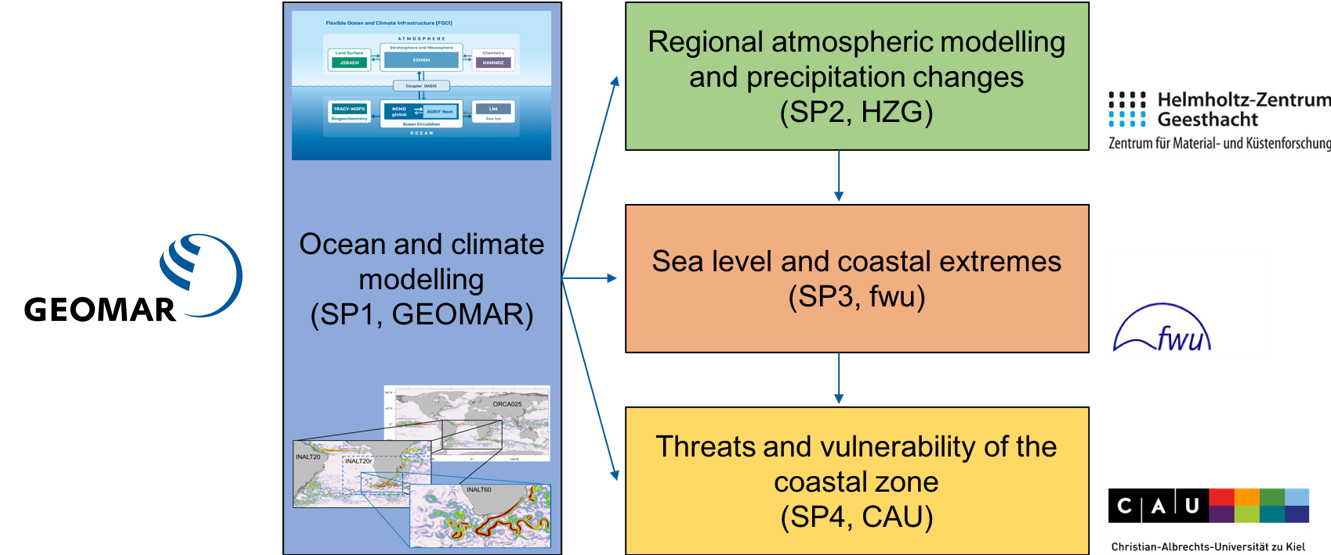CASISAC - Changes in the Agulhas System and its Impact on Southern African Coasts
In CASISAC, changes in the oceanic conditions and regional sea level around southern Africa are explored through global ocean and coupled climate modelling. The highly variable Agulhas Current System is subject to changes in the hydrography and circulation in response to atmospheric variability and anthropogenic trends. Owing to its embedding into the large-scale circulation, high-resolution ocean models of the Atlantic and Indian oceans with grid resolution of down to 1-5 km, nested into global models at coarser resolution, are used. Global and regional climate models allow to research the climate response to increasing CO2 concentrations and future recovering of the Antarctic ozone hole. A particular emphasis is on the climate extremes, such as rainfall, in southern Africa.
Sea level changes are studied using water level hindcasts from an ocean model and tide gauges. By combining the water levels with significant wave heights, the risks of compound flooding events (tides, surges, and waves) and heavy precipitation are explored. Coastal flood impacts are assessed for South Africa at regional and local spatial scales using high-resolution hydrodynamic models of different complexity in order to accurately analyse the impacts of today’s and future flood events, but also the potential benefits of different adaptation options.

